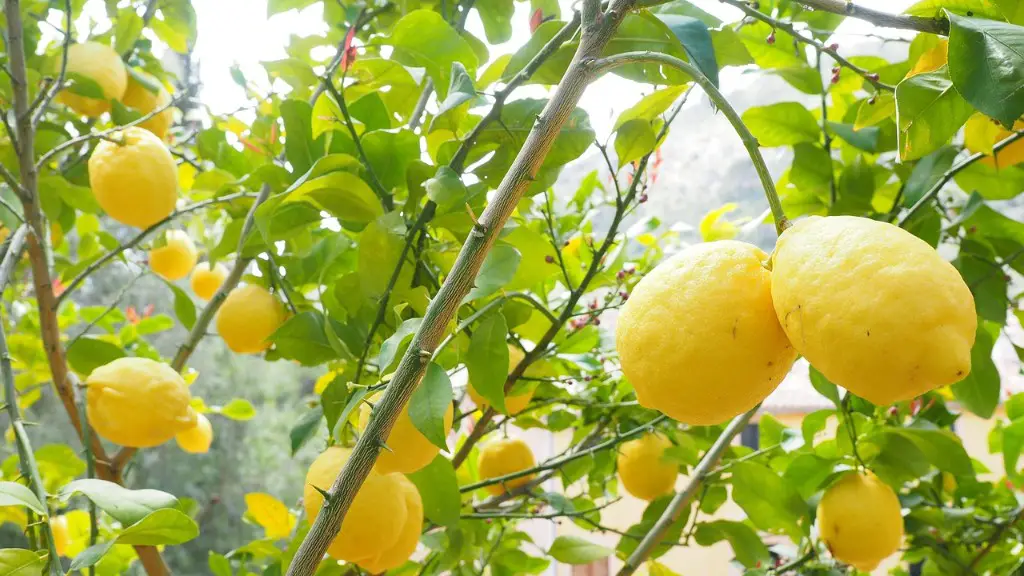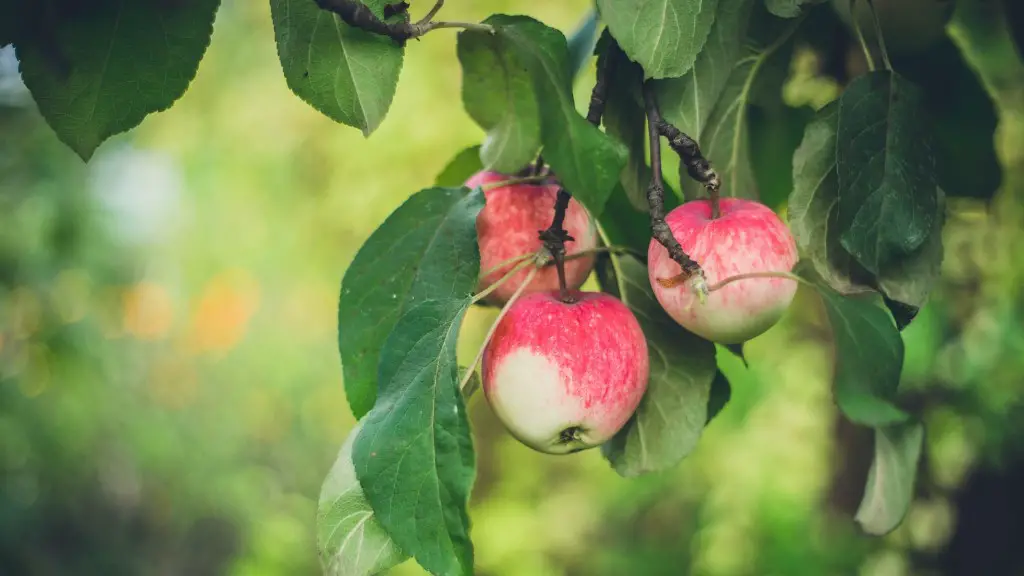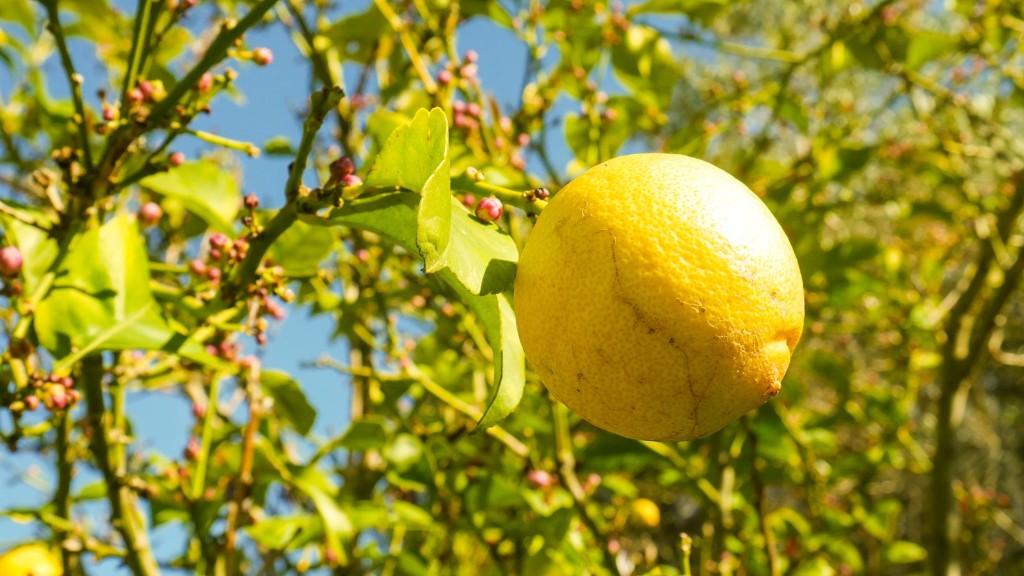One of the most common problems faced by lemon tree owners is leaf damage. This could come in the form of brown spots on leaves, wilting edges, discoloration, or even entire leaves turning yellow. Although any of these could be an indication of numerous issues, one of the most frequent causes is pests. Such as aphids, caterpillars, mites, thrips and scale insects, these are all notorious for their voracious appetites.
Aphids and caterpillars are especially detrimental to lemon tree health, as they feed on both new and mature leaves. Aphids in particular can cause leaves to curl, yellow and become covered in sticky and/or honeydew deposits. Caterpillars, on the other hand, chew through and consume entire portions of leaves.
Scale insects are also particularly damaging, as they can generate tremendous amounts of sap while they feed on tree juices. This sap in turn attracts ants and other insects, who then feed on the sap as well. The sap also blocks sunlight and air from entering the leaves, resulting in further damage.
Mites and thrips are both very small and difficult to detect. But once they become established, they rapidly reproduce and increase their numbers. As they suck the sap from the leaves, the foliage will become dry, yellow and unhealthy-looking.
In addition to pest damage, a lemon tree could also be affected by fungal diseases such as sooty mold or powdery mildew. These fungi feed on the honeydew generated by the pests, and in turn infect the lemon tree leaves with a black, soot-like substance or a white, powdery film.
In order to treat the problem, one must first identify the pest or disease that is causing the damage. Once the source has been determined, appropriate steps must be taken to control and contain the pests. This can include the use of chemical sprays, the release of beneficial insects, or preventive measures such as pruning and proper drainage.
It is also advisable to check the lemon tree’s soil on a regular basis to ensure it is not overly dry or wet. Additionally, one should monitor the tree’s surroundings and make sure it is not getting too much or too little sunlight, or that any nearby weeds or plants are not producing harmful chemicals.
Curing Infestation
Once the source of the infestation has been identified, there are a number of methods available in order to treat it. The most effective is the use of chemical insecticides, as they offer quick results. However, when using these it is important to follow the directions closely, as misuse of these can lead to further damage of the tree.
Another popular choice for pest control is the release of beneficial insects. Predatory ladybugs, for example, feed on aphids and can help the tree fight off the pests. In addition, biological insecticides, such as Bt (Bacillus thuringiensis), can be used as these contain naturally occurring bacteria that kill insects but are harmless to animals and humans.
Plant oils and soaps, however, are best used as a preventive measure as they can effectively repel pests and stop them from laying eggs. Neem oil, in particular, is effective in treating a wide range of pest infestations and can also be used to protect leaves from fungal diseases.
Another alternative is to apply natural pesticides to the tree’s foliage as a means of discouraging and controlling pests. Examples of these include garlic or onion sprays or even a diluted solution of liquid soap or detergent.
Finally, cultural methods should also be taken into account. This includes regular pruning to thin out branches, improving the drainage of the soil, and removing weeds and other plants that could be harbouring pests.
Preventive Measures
In order to avoid a repeat of the problem and to keep the lemon tree healthy, it is necessary to monitor the state of tree on a regular basis. This includes inspecting the foliage for signs of pest damage, and checking the soil’s moisture levels periodically.
In addition to monitoring the tree, preventive measures should also be taken in order to make the tree less attractive to pests. Keeping the tree well-pruned and thinned out is one way to achieve this, as it ensures the leaves do not form a dense canopy. Likewise, eliminating any source of water or keeping the tree away from open ground can also be effective in discouraging pests.
Providing sufficient sunlight to the lemon tree is another important factor in promoting its health. Good air circulation is also a method of pest management, as it forces them to move away from the area. Lastly, using physical barriers, such as sticky traps and screens around the tree, can also help to keep pests at bay.
Common Mistakes
Common mistakes made by lemon tree owners is over-watering the tree, overwintering it outdoors, or failing to prune the branches properly. In addition, the use of chemical treatments in the wrong concentrations can lead to further damage and with insufficient powers, the pests are more likely to come back.
It is also not advisable to use ineffective methods of pest control such as insect sprays or hand-picking them off. The former is not effective in getting rid of all the pests, while the latter is labour intensive and requires consistency.
Finally, another mistake people make is attempting to restore the tree’s health without addressing the underlying cause. For example, applying fertilisers without first addressing the presence of pests can often be ineffective, as it does not address the root of the problem.
Organic Solutions
Organic solutions are an excellent way to protect and strengthen a lemon tree if it has been affected by pests. These remedies are generally safer for the environment than chemical treatments and can also be very effective in getting rid of the pests. Organic solutions can include the use of homemade solutions such as garlic or mustard sprays, soapy water solutions, and neem oil solutions.
Diatomaceous earth is another organic solution that is often used to control pests. This is a naturally occurring sedimentary rock which contains tiny particles that are sharp enough to kill pests upon contact. It is also effective in killing fungal diseases such as powdery mildew.
Horticultural oils such as mineral oil, petroleum oil and paraffin oil can also be used. These are effective in killing off mites and other insects but do not harm beneficial insects such as ladybugs. As long as the oil is sprayed evenly onto the foliage, it should be able to treat the infestation.
Beneficial insects, such as ladybugs, can also be released into the lemon tree in order to help control the pest population. These predators feed on pests, enabling the tree to remain healthy. Lastly, introducing companion plants into the area can also help, as these can deter pests from the lemon tree and prevent further infestations.
Conclusion
In conclusion, it is important to identify the source of the problem before attempting to treat it. If an infestation of pests is present, it is essential to take appropriate steps in order to control and contain them. This can include the use of chemical treatments, the release of beneficial insects, or taking preventive measures such as pruning and proper drainage. In addition to this, organic solutions like horticultural oils and beneficial insects can also be used in order to protect the lemon tree. Finally, good practices such as proper pruning and monitoring the soil’s moisture levels should be followed in order to ensure a healthy lemon tree in the future.





